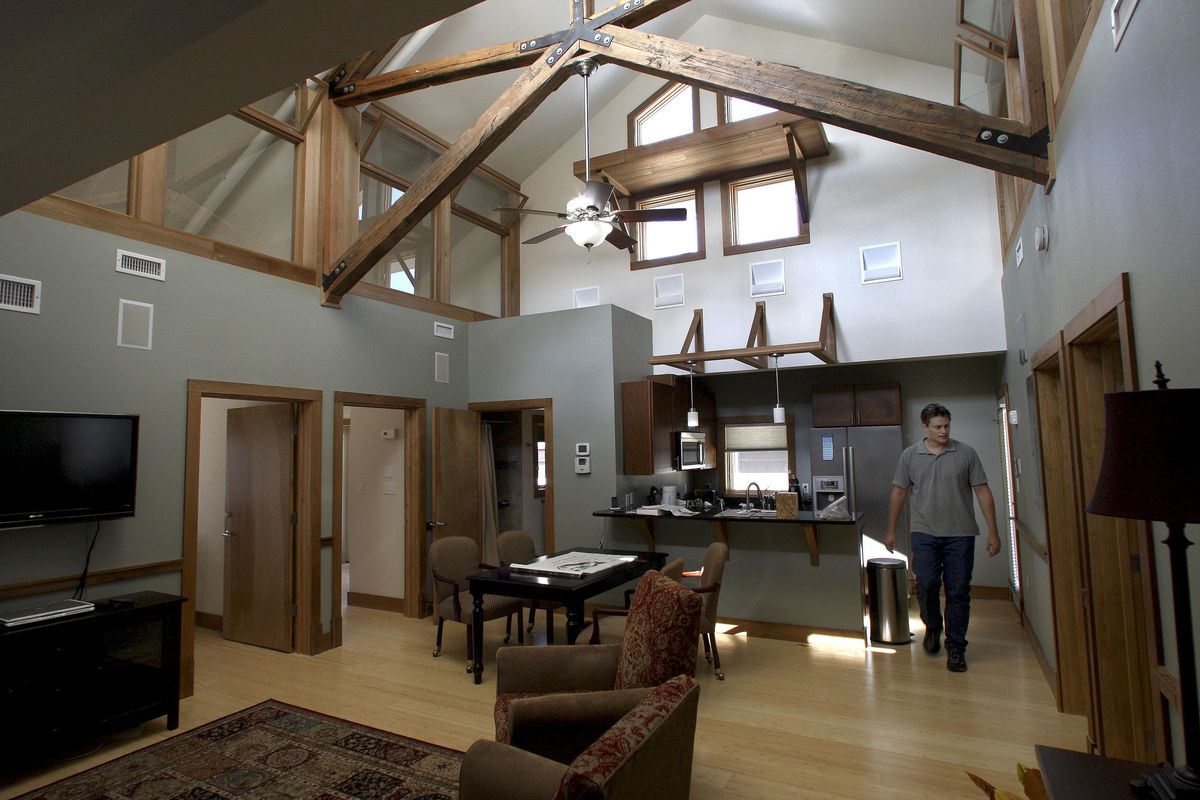House tests hydrogen power
Promising alternative energy gets tryout in futuristic home

TALLAHASSEE, Fla. – The elevated floor, tall ceilings, steeply pitched roof and broad overhangs are borrowed from the traditional “cracker house” that relied on shade and air movement for relief from Florida’s sultry subtropical climate.
A pair of magnolia trees, dark red siding, ceiling fans, bamboo flooring and rustic wooden beams salvaged from a Georgia barn add to the inviting atmosphere of the little house in the middle of Florida State University’s brick-and-mortar campus.
It may look like an out-of-place throwback, but the $575,000 Off-Grid, Zero Emissions Building – OGZEB – has a futuristic purpose. Its mission is to test potential solutions to the world’s energy and climate change problems by combining old tricks with cutting-edge technology, including a unique solar-hydrogen experiment.
“What we’re trying to do is create the building of tomorrow with a lot of the feel of today,” said project manager Justin Kramer. “If nobody wanted to live in it, what’s the point?”
Like a 19th century cracker house, there are no power lines.
Solar panels on the roof are one of the few hints the two-bedroom home is not a relic of the past. Solar panels have been popping up on rooftops around the country this year, in part because of an expanded federal subsidy that pays for 30 percent of the cost. States, including Florida, offer additional tax credits and incentives that further drive down the cost.
With Florida State’s off-grid house, part of the electrical energy they produce is used to turn water into hydrogen for power when the sun isn’t shining.
Dedicated in August, OGZEB has a couple of small offices, but most of the interior, including an expansive living-dining- kitchen area, is strictly residential. Graduate students, staffers and VIPs will take turns living there to give old and emerging technologies alike a real-world tryout.
Similar experiments are being done elsewhere, but what sets Florida State’s effort apart from most is the building’s reliance on hydrogen for power at night and on cloudy or rainy days.
Hydrogen is a potential low-cost alternative to batteries because storage tanks for the lighter-than- air gas are comparatively simple and cheap.
“It’s a viable concept that they are demonstrating,” said Yogi Goswami, co-director of the Clean Energy Research Center at the University of South Florida. “For hydrogen the problem is the cost of production. It’s usually high. If they are going to reduce that cost, that’s moving in the right direction.”
Florida State scientists think they have a solution, Kramer said. They’ve developed a way to use relatively cheap and common metals to replace platinum, a critical but rare and high-priced element that makes hydrogen from water electrolysis devices expensive.
Perfecting that technology is going to take more time and money so the house is starting with an off-the-shelf version that uses traditional platinum electrodes, Kramer said.
Another innovative feature is how the hydrogen is used. Besides a hydrogen fuel cell to generate electricity, the gas is burned in the kitchen range and other appliances may follow.